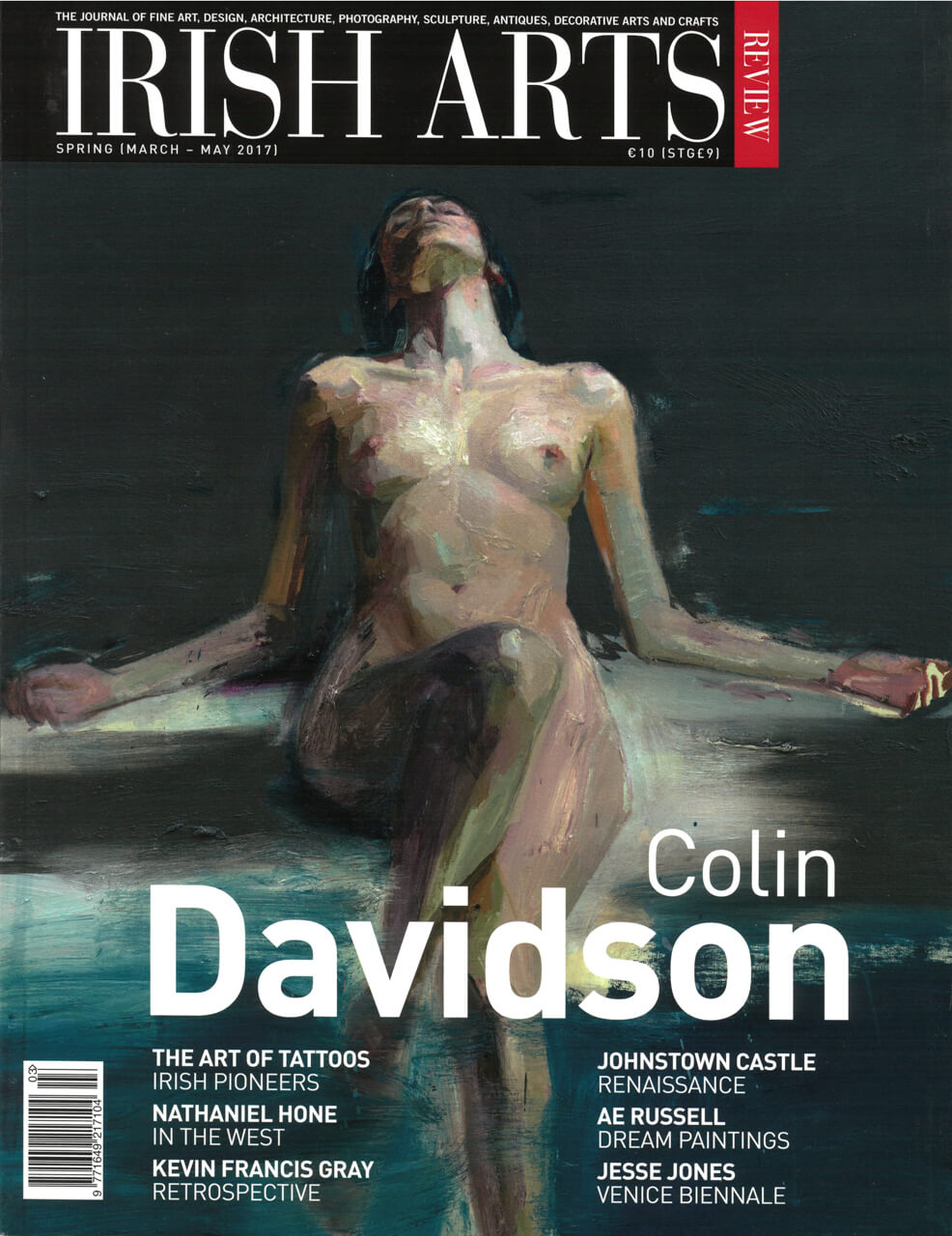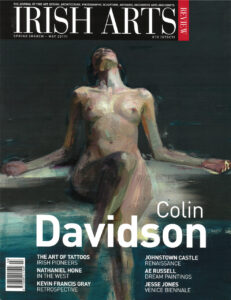

Peter Pearson welcomes a new chapter in the management of Johnstown Castle, County Wexford
As many people, will know, Johnstown Castle, Co Wexford is a place of great romantic charm and tranquillity, with its mature parkland incorporating lakes, walled gardens, folly turrets and sculptures – all providing a setting for the castle itself – a great 19th- century extravaganza in the Tudor-Gothic, designed by Daniel Robertson – a versatile and very popular Victorian architect who executed many projects in the South-East of Ireland.
It is a curious fact that until now the region has had no ‘Stately Home’ open to the public. Perhaps this is because Wexford had fewer large historic houses to begin with and unfortunately, at least four of the grandest were turned to ruins in the 1920s; Castleboro, Coolbawn, and Wilton are the three most spectacular of these. The massive Courtown House near Gorey, was demolished in about 1949. Also, Wexford is possibly better known for its middle-sized houses – large Georgian farmhouses often attached to castles or tower houses – dozens of examples of which are well documented in recent publications such as the new edition of Houses of Wexford by Rowe and Scallan, or the National Inventory of Architecture.
Johnstown Castle began as one of these tower houses to which a fortified dwelling was added This is known from an early drawing. In the early 19th century when its owner, John Grogan Morgan was at the peak of his wealth, the old dwelling was replaced with an elegant Gothic Revival structure, (Fig) later to be much enlarged and embellished with battlemented towers, complete with porte-cochère to shelter guests arriving by coach, a galleried and domed entrance hall, a fine oak-carved staircase (sadly no longer extant) and a suite of highly ornamented reception rooms, including a special ballroom and billiards room addition. There was also a private science laboratory.
The medieval tower was left standing and integrated into the front of the new building- a reminder of its ancient Esmonde pedigree, and can be seen ivy-clad in early photographs, where it fitted rather well into the rambling asymmetrical Gothic composition but it was to be cleared away in 1945.
The castle and estate was gifted to the Irish people in 1945, with the proviso that it be used for educational purposes, and following some alterations it was opened as an agricultural/ horticultural college soon after. The extensive farmland was used for teaching and research (as it is today) and the grounds, so close to Wexford town, were opened to visitors in 1969.
With the eventual closure of the college in 1959, the Department of Agriculture began to use the castle for offices, a practice which kept the building heated and cared for, and this situation endured until the early 2000s, when new offices were built in the demesne away to the east of the castle.
The Department’s advisory and grant aiding section, Teagasc, has an educational role which sits well with the purpose of the Agriculture Museum. It is managed by a voluntary board and run by a small but dedicated team. The museum, which opened in 1976, mainly due to the efforts of Austin O’Sullivan of Teagasc, has become synonymous with Johnstown Castle, and boasts a large and varied collection of objects, photographs and large machinery, relating to the story of farming in Ireland.
The museum which continues to attract significant numbers of visitors houses displays of many old implements, like ploughs, harrows or seed sowers often beautifully painted and which have an aesthetic appeal in their own right. Granted, many of the displays could do with updating but not at the expense of thinning out the collection – for it is the breadth of the collection which is most appealing, including items from all periods drawn from all over the country, and detailing different farming traditions and methods. Some exhibits, like Godkins horse-drawn delivery van or the recently acquired steam roller from Curraghmore in Co Waterford have an intrinsic beauty.
The castle and estate was gifted to the Irish people in 1945, with the proviso that it be used for educational purposes
Equipment associated with the dairy, the horse and the harvest are all included. Indeed, if there is any scope for expanding the museum it would be to bring it up to date and tell the story the changes of the last fifty years. There could also be an introductory section where an overview of farming in Ireland since earliest times would be laid out, and the relationship to food and business explored.
Another perhaps less trumpeted part of the museum is the collection of Irish country furniture which is almost certainly the best collection of traditional pine, artisan made furniture in the country. All of the pieces once in daily use in farmhouses and cottages all over Ireland are not only beautifully made, but of great historic interest, and show their age gracefully. The display of this important collection which is incidentally very popular with visitors could be further enhanced if space permitted.
Very little damage was done to the fabric of the castle when it was converted from private house to college use after 1945. Though much of the main roof was asphalted and a precast concrete dome light was inserted over the hall, these changes were not aesthetically detrimental to the castle. The most serious loss was the removal of the great double Gothic style staircase, which was said to have been designed by an English architect named Thomas Hopper. It was removed in 1945 to create space for a new library in the college. The reconstruction of this staircase would be a major undertaking, especially given the amount of elaborate carving involved, but it would be a great adornment and would re-unite the elegant reception rooms of the ground and upper floors. The two remaining stairs which are in use today are strictly utilitarian and not worthy of such a sumptuous interior.
Johnstown castle is fortunate to possess some original furniture dating from the 19th century – a collection of pale oak benches, carved tables, a dumb waiter, some carved chairs and a chaise longue. These were specifically made for the castle and acquired after the auction of the contents, which took place in 1944. More recently, Matt Wheeler, the curator of the Agriculture Museum has sought to purchase other items known to have come from the castle, such as an elaborate French sculpture of a Marly horse by Poitevin. These items were all listed in the auction catalogue.
As regards the future, while Teagasc will remain the owner on behalf of the Irish people, the Irish Heritage Trust as the management body has developed plans for a new visitor centre and restaurant which will be located to the rere of the Agriculture Museum. A playground and animal/pet farm area is also envisaged. A new access road is planned which will be safer for motorists and buses and a new car park will be created. At present traffic must negotiate the beautiful but narrow stone arched entrance gate where there is extremely poor visibility to the road. All of these changes are planned to discreetly blend with the mature demesne and new planting is envisaged. The new venture aims to embrace the whole Johnstown Castle demesne and enhance the visitor experience while conserving the heritage as a whole. Hopefully this care also includes the fine twin gate lodges and the quirky little church which once formed part of the estate but are now semi-derelict. This church is actually the first structure on the Johnstown demesne glimpsed when coming from Wexford.
In the mid 19th century several highly romantic pictures of Johnstown Castle were painted by the artist Edmund Thomas Parris, which show fashionably dressed ladies and gentlemen parading in the grounds, while another depicts the ladies practising archery in front of the castle. The paintings demonstrate that even when the castle was new there was a very deliberate attempt to romanticise the buildings, the grounds and the whole setting. The exquisitely carved gothic tracery of the windows, the towers and battlements were all calculated to create a sort of historical fantasy – and the whole mise-en-scéne, like that from an opera set, was reflected in the dark waters of the lake, on which the swans still glide. The painter even captured a peacock -whose descendants continue to inhabit the parkland at Johnstown.
The Irish Heritage Trust is establishing itself as a body with specific expertise in the management and running of historic properties and has already taken over Fota house in Cork and Strokestown Park in Roscommon. Some were sceptical when the new Trust was first announced By Bertie Ahern some years back and pointed to the existence of other bodies which have a mandate to own such properties – like The Irish Georgian Society, An Taisce and even the Heritage Council. Some of these organisations have in the past held heritage properties but the reality is that they have other commitments and inadequate funding and staff to do this job. The Trust aims to develop its properties to their fullest potential, but first, in Johnstown’s case, essential repairs and electrical work must be carried out. Later it is hoped to refurbish all the main rooms and reopen the impressive servants’ tunnel which runs from the meat-house to the castle basement and kitchens, and to install exhibitions relating to life in the castle, its owners and staff alike – and so tell the full story of Wexford’s greatest surviving country estate.
The residents of Johnstown Castle
The origins of Johnstown Castle go back to the late 12th century when the Esmondes, a Norman family became established here and eventually erected a tower house on this site. The lands were confiscated in 1649 after Cromwell’s brutal suppression of the rebellion, and were granted to one of his soldiers, Colonel John Overstreet. The property passed by marriage into the hands of the Grogan family, who we find at Johnstown in the late 18th century. Though untitled, the Grogans possessed a very large estate of over 20,000 acres. Cornelius Grogan, in common with quite a number of fellow Protestants supported the 1798 rebellion, and he was hanged on Wexford bridge and Johnstown was once again confiscated! His brother John, having fought on the British side, regained ownership in 1802. In the following decades John, but mainly his son Hamilton Knox Grogan Morgan undertook the massive rebuilding of the castle and creation of the lakes and parkland. Hamilton was married to Sophia Maria Rowe of Wexford and he became an MP for County Wexford and was an ardent supporter of the building of the railway from Dublin to Wexford. Sophia was keenly involved with the building and decoration of Johnstown and in promoting local craftsmen to carry out the work. In a strange quirk of fate, following her husband’s death in 1854, she married Sir Thomas Esmonde thus bringing the castle back to its original founding family.
Peter Pearson is a writer and an artist.



